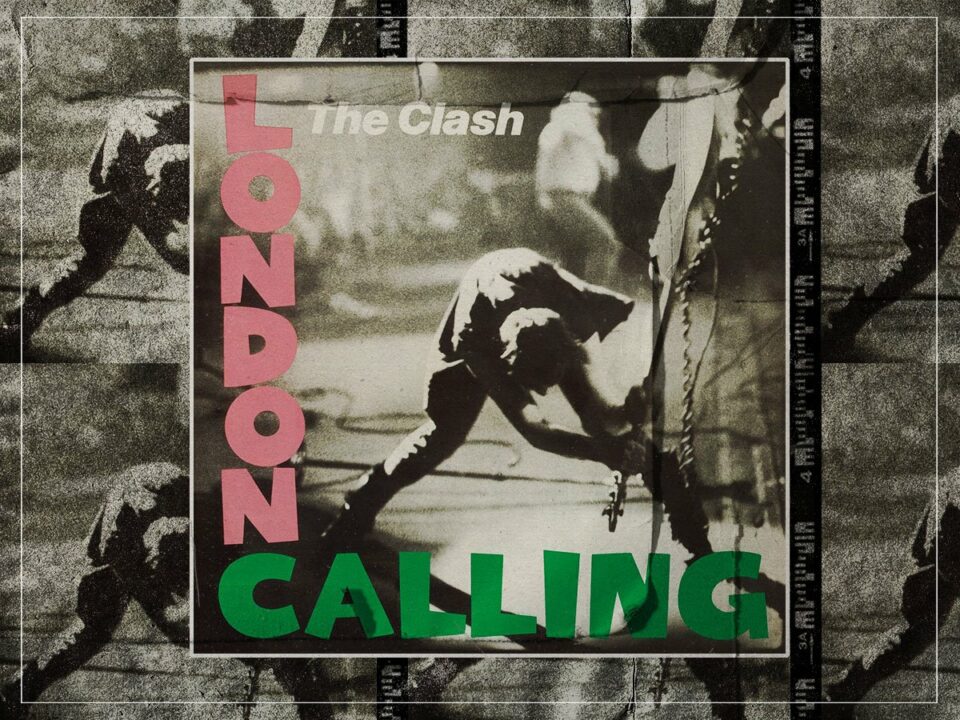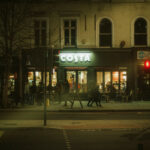To be constrained by artistic or social norms have left an indelible mark on popular culture. The Clash’s iconic cover art has become a timeless symbol of rebellion and creative expression, resonating with audiences for over four decades. The story behind the image, capturing a moment of spontaneous rebellion and emotion, serves as a powerful reminder of the transformative potential of art and music. If you’re an artist or musician looking to make an impact with your work, the ‘London Calling’ cover and Simonon’s story offer valuable insights into the power of authenticity, individuality, and creative expression
Unveiling the Mystery: The Person Behind the Smashed Guitar on ‘London Calling’ Cover
If you’re a fan of the iconic cover art for The Clash’s 1979 album “London Calling,” you’ve probably wondered about the person who is smashing the guitar and the story behind the striking image. The cover features a photograph of Paul Simonon, the band’s bassist, smashing his Fender Precision Bass on stage at The Palladium in New York City. This moment, captured by photographer Pennie Smith, has become one of the most recognizable and enduring images in rock music history.
The picture captures the raw energy and rebellion that defines The Clash and their music. It’s a moment frozen in time, symbolizing the band’s fearless and rebellious attitude towards the music industry and the world at large. The cover has been celebrated as an iconic portrayal of punk rock and has influenced countless musicians and artists over the years.
The Story Behind the Smash
The story behind the image is as legendary as the image itself. The Clash were performing at The Palladium on September 21, 1979, during their “Take the Fifth” US tour. The venue’s security team was preventing fans from standing up and dancing, which clashed with the band’s inclusive and energetic approach to performing. The tension in the crowd continued to rise throughout the show, and the atmosphere became increasingly fraught.
As the band launched into “Clampdown,” the crowd’s energy reached a fever pitch, and Simonon, frustrated by the restrictions imposed by the security team, vented his anger by smashing his bass on the stage. The moment was pure spontaneity, a reflexive act of rebellion and frustration that perfectly encapsulated the band’s ethos. The photograph, taken by Pennie Smith, captured the intensity and emotion of the moment and has since become timeless.
The Person Behind the Guitar Smash
Paul Simonon, the man responsible for the iconic guitar smash, has long been known for his rebellious and artistic nature. As a founding member of The Clash, he played a crucial role in shaping the band’s sound and image. Simonon’s bold and distinctive playing style, combined with his striking stage presence, made him a central figure in the punk and post-punk scenes of the late 1970s and early 1980s.
Despite his onstage antics and preoccupation with image, Simonon is widely regarded as a thoughtful and introspective individual. His passion for art and literature has led to a successful second career as a visual artist following The Clash’s breakup in 1986. Over the years, he has continued to explore his creative talents through painting, drawing, and photography, earning critical acclaim and international recognition for his work.
Simonon’s influence on popular culture extends beyond music and art. His distinctive look and rebellious spirit have made him a style icon, inspiring fashion designers, filmmakers, and musicians alike. His impact on the punk and post-punk movements, as well as his enduring influence in contemporary pop culture, is a testament to his lasting legacy and cultural significance.
The Legacy of the ‘London Calling’ Cover
The ‘London Calling’ cover has become an enduring symbol of rebellion and creative expression. Its influence can be seen across various media, from music and fashion to film and visual arts. The Clash’s music and imagery continue to inspire new generations of artists and musicians, carrying on the band’s legacy and impact.
The cover art’s raw and unapologetic energy has resonated with audiences for over four decades, solidifying its place as a cultural touchstone and a defining image of punk rock. The photograph’s captivating authenticity and emotive power have made it an enduring emblem of defiance and artistic freedom.
The ‘London Calling’ cover has left an indelible mark on popular culture, serving as a powerful reminder of the transformative and rebellious potential of music and art. Its enduring relevance and impact offer a timeless testament to the enduring power of creative expression.
Benefits and Practical Tips
If you’re a musician or artist looking to make an impact with your work, the story of the ‘London Calling’ cover and the person behind the iconic guitar smash offer valuable lessons and insights:
Embrace spontaneity and authenticity in your creative process. The most memorable and impactful art often emerges from genuine moments of inspiration and emotion.
Use your platform to advocate for change and challenge the status quo. The Clash’s fearless approach to addressing social and political issues through their music stands as a powerful example of the potential for art to effect change.
Celebrate individuality and creative expression. The Clash’s willingness to push boundaries and eschew convention has left a lasting legacy that continues to inspire artists today.
Ultimately, the story of the ‘London Calling’ cover and the person behind the smashed guitar serve as a testament to the enduring power of art and music to provoke, inspire, and connect.
In Conclusion
The person behind the smashed guitar on the ’London Calling’ cover, Paul Simonon, continues to influence and inspire artists and musicians around the world. His fearless approach to creativity and his refusal
Band Visuals: The Clash’s Impact on the Punk Rock Scene
In the world of punk rock, it wasn’t just about the music – it was also about the visual impact. From loud guitars to politically charged lyrics, punk rock was a complete artistic revolution. This movement impacted various art forms, and one band that truly embraced this visual element was The Clash.
Formed in 1976 during London’s punk movement, The Clash quickly rose to fame as one of the defining groups of the scene. With guitarist Mick Jones at its helm and frontman Joe Strummer from The 101ers, this band had a knack for combining powerful visuals with their musical prowess.
The members of The Clash all attended art school and recognized the importance of visual art in creating an impactful image for their band. Their style mirrored their music – eclectic and unmatched – blending different styles such as punk, rockabilly, dub, ska, and even hip-hop.
Their attention to detail extended to their cover artwork as well. Singles like ‘White Riot’, ‘(White Man) In Hammersmith Palais’, and the ‘Cost of Living’ EP were characterized by iconic artwork that perfectly matched their music.
However, it was with London Calling’s release in 1979 that The Clash showcased their unparalleled creative vision. Not only did this album mark a shift from punk roots into a more profound sound but also featured legendary cover art depicting bassist Paul Simonon smashing his Fender Precision Bass on stage during a performance at New York City’s Palladium.
The photograph taken by Pennie Smith during that moment became iconic despite being initially out of focus. Ray Lowry saw its potential and transformed it into an iconic cover for London Calling.
One interesting fact is that Simonon frequently used Fender Precision Basses – known for its weight and fuller sound – with his smashed bass now being displayed at the Museum of London as part of its historical value within both music history as well as image making in punk rock culture.


